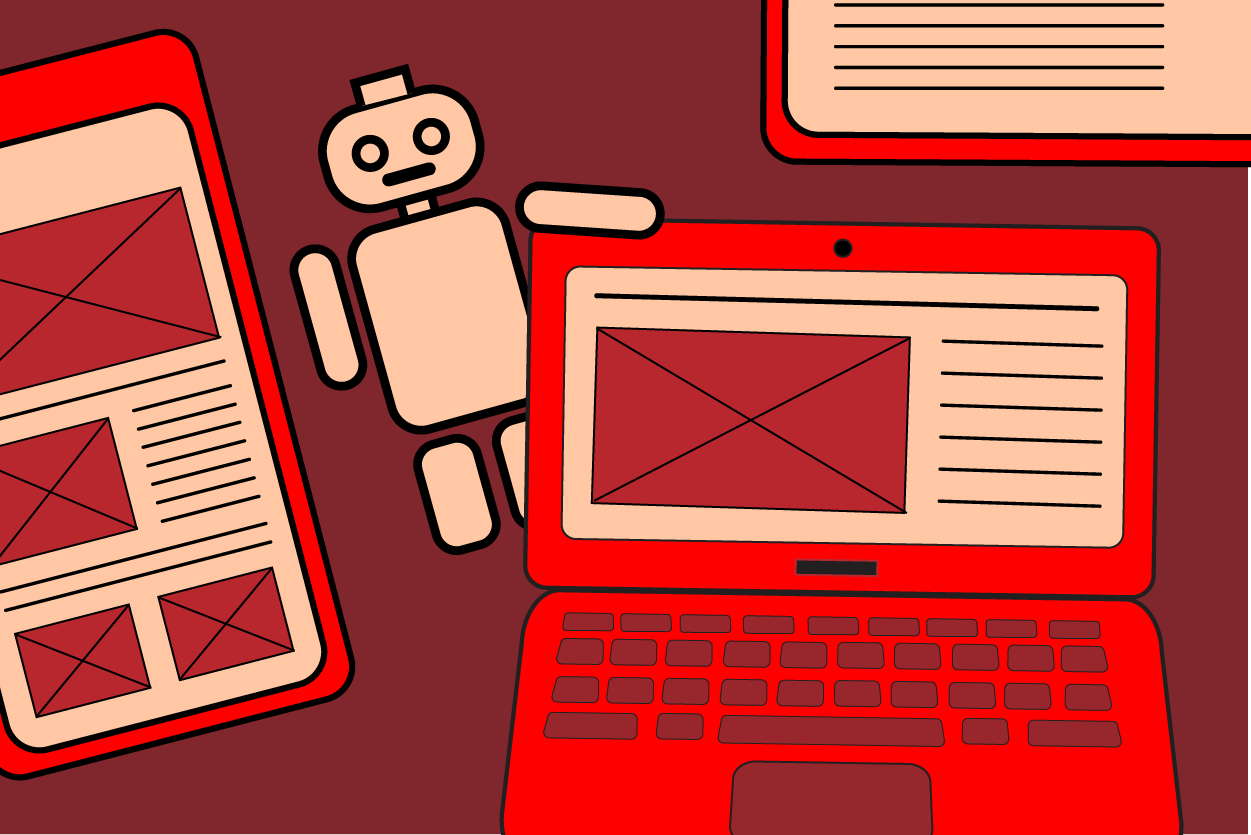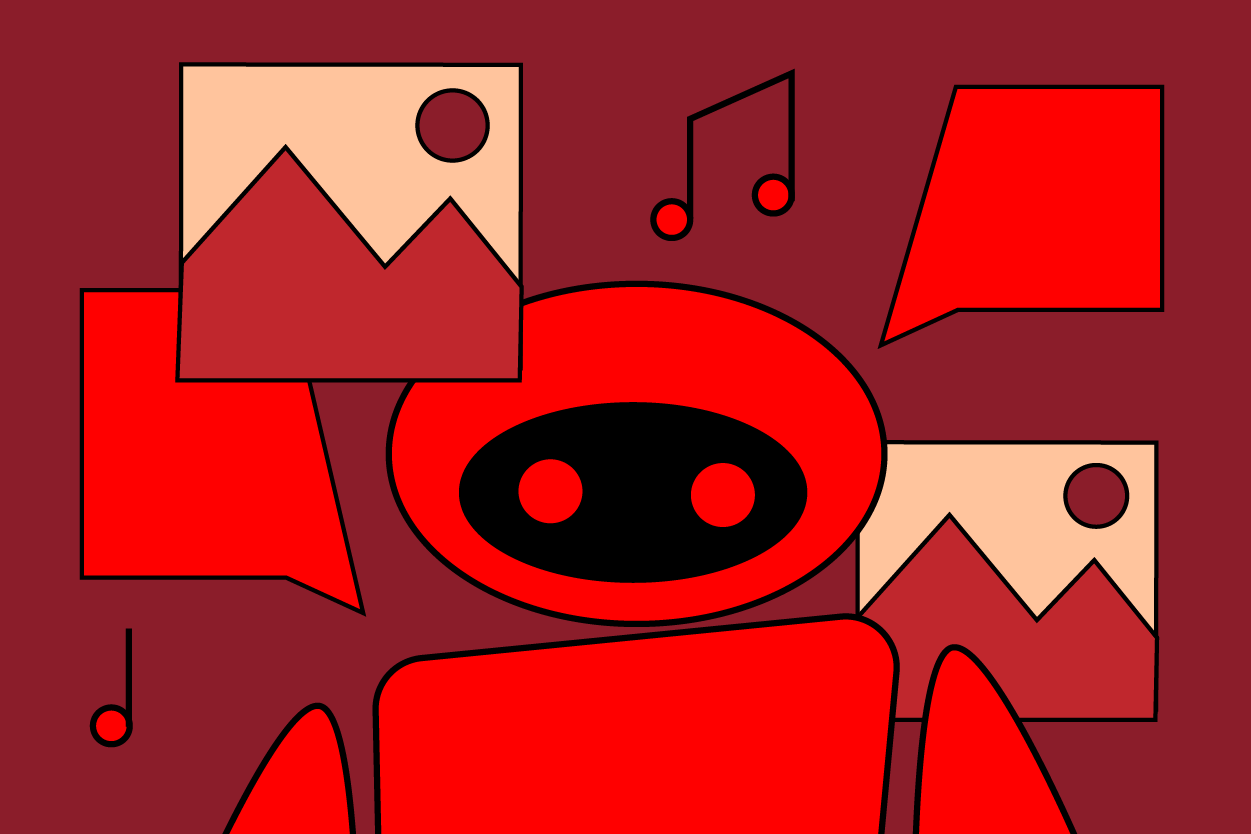If you're wondering about the impact of Artificial Intelligence (AI) and User Experience (UX), you don’t have to look very far. From your cell phone to your streaming service to your online shopping experience, AI and UX go together. Designers are partnering with machines to get the job done.
The success of the finished product depends on whether a brand has done its research and is listening to what customers — and machines — are saying. Today, AI is used to learn more about consumer behavior, improve website navigation, and ultimately create a welcoming, more personalized user experience.
Sounds like a sci-fi movie, right?
Well, the AI world is less far-fetched and more far-reaching these days. It is impacting various industries, including the online grocery shopping app you use weekly. How helpful is it to have a reminder of the items you purchase the most or a suggestion for an item you may enjoy? This complex work is done thanks to machines that try to think like us and predict our next move.
While AI can bring a business much success, there can be challenges for the humans in the office. For many website designers, the thought of having an AI design partner is a bit concerning. There is no need to worry, though. Even the best machines cannot replace the human touch.
What is Artificial Intelligence?
The concept of Artificial Intelligence may seem a bit out of this world, but we promise you it is not. AI relies on machines to mimic processes that humans can do. For example, AI can mimic learning, reasoning, self-correction, and even creativity. It is important to note that AI cannot replace a human’s role, but it can help to improve many services.
You may notice the touch of AI in the customer service industry. AI is also beneficial for repetitive tasks, such as leading quality control on products. Instead of wondering about being replaced by a machine, the goal is to empower designers to work with AI to create the best UX for visitors. When done right, everyone is happy. Revenue is rising, and consumers are loyal.
Remember:
● AI algorithms can help guide designers
● AI suggestions encourage designers to think outside the box
● AI is data-driven and follows patterns
What is User Experience?
A brand is best at what it does when it understands its consumers. When a shopper is invited to a website, this is the brand’s time to shine. It can only be done through a positive User Experience.
Designers who excel in creating a positive UX focus on the needs of the consumer and their values. Designers also think outside the box — and steps ahead — to determine which design elements could be hurdles for particular groups of consumers.
According to Peter Morville, a website is most usable and valuable when these criterion are met:
● Useful
Does the website successfully meet a need by clearly providing a product or a service?
● Usable
Can visitors use the website to meet their needs?
● Desirable
Does the website appeal to the senses?
● Findable
Can potential customers find your website through a search?
● Accessible
Can customers of all abilities use and enjoy your website?
● Credible
Is your content credible and verifiable?
When the design team sits down and realizes the power of AI, the benefits begin to grow. Here are three examples:
AI Can Analyze User Behavior
Brands spend time and money to gain a better understanding of how their customers behave. CEOs and market leaders know the value of aligning with customers and meeting their needs the first time.
While humans can create campaigns, surveys, and other ways to hear from customers, AI can do it much faster. AI picks up on one important thing: patterns.
What may take a team of marketers months to find out can be quickly identified by a machine. The result is a savings of time and money.
AI, for example, can analyze user behavior to determine the busiest time on your website. While you can spend time scrolling through analytics, machines can quickly tell you whether a visitor goes to one page and immediately leaves. AI tools can also help you identify which pages lead to conversions.
AI Can Improve Website Navigation
Did you know AI can help improve a visitor’s experience while moving through your website? Think about templates that exist with certain colors, layouts, and typefaces. The algorithm can also help with editing photos, ensuring responsive design, and doing A/B testing to determine the best options. With input and data from consumer behaviors, algorithms can deliver the best website for your audience.
One of the best additions for website navigation? A virtual assistant. These days, AI-powered chatbots are common on websites. These chatbots or virtual assistants can be available 24/7 and the machine's ability to mimic human processes and language allows it to respond to common questions.
Of course, a chatbot doesn’t match the warmth of a human voice. It does, however, help at 2 a.m. when you are trying to learn about a refund or schedule an appointment. AI can also help with searches and suggestions.
AI Can Create More Personalized User Experiences
Doesn’t it feel great when you log into an account and see your favorites? Think about music or movie streaming services. You feel seen when your most recent views or listens appear. It feels even better when a suggestion pops up — and you actually like it.
You can thank AI for these features and their impact on the user experience. Machines have been watching and writing down detailed internal notes to prepare for your next visit. These machines are looking at your behaviors and patterns to see if you listen to more music during a certain part of the day. Perhaps there is one genre of music you love now, but didn’t know existed until an AI suggested it.
AI can create a more personalized user experience, which is something every customer wants. Don’t you like it when your favorite coffee shop knows your order and suggests a new drink? How about when your favorite clothing store helps you pick a size based on your previous purchases?
A personalized user experience feels great — and it also feels like you have found a brand that gets you.
The bar is now even higher for brands, so partner up with AI for the best UX. Website visitors expect an experience designed just for them. They demand easy access to solutions, and they need an evolving website to monitor and adjust as they move from page to page. It’s time to join the conversation or jump to the back of the line.


